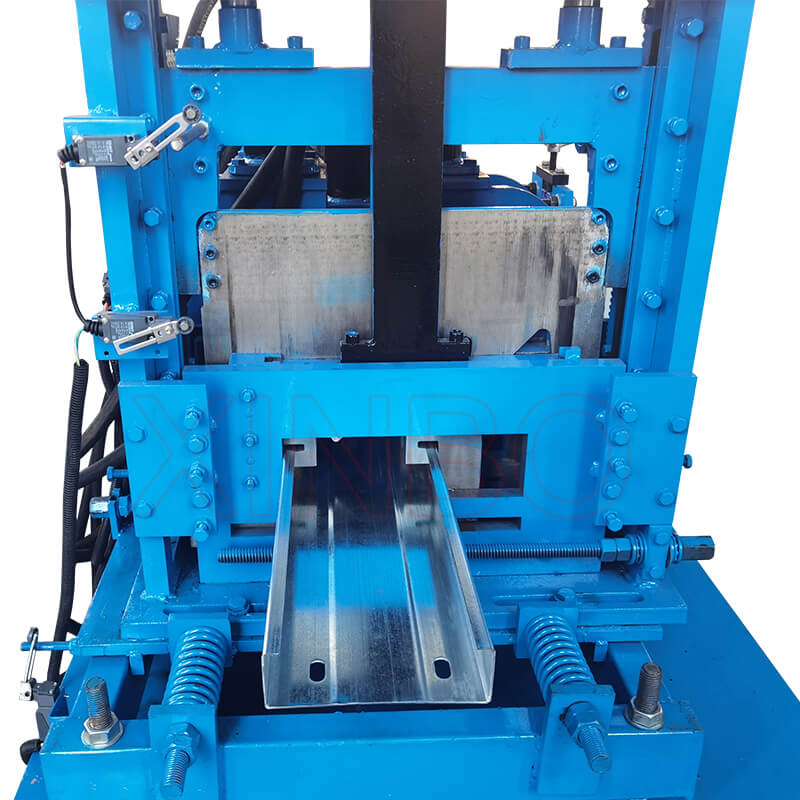Comparative Analysis of Roll Forming Machine and Traditional Forming Process
Metal forming process is the core link in manufacturing industry, and its development history is closely linked with industrial progress. Traditional forming processes such as casting, forging, welding, etc. have been used for hundreds of years, and roll forming machine as an emerging forming technology, is gradually showing its unique advantages.

The working principle and characteristics of roll forming machine
Working Principle
Roll Forming Machine utilizes rollers to exert continuous pressure on the metal plate, causing it to undergo plastic deformation, so as to obtain the required shape and size of the parts. The rollers roll continuously during the rolling process, and by cooperating with the mold, the metal material is gradually shaped into the target shape.
Features
High efficiency: The roll forming machine adopts continuous rolling method, which has fast production speed and high efficiency, and is suitable for mass production.
High precision: During the rolling process, the metal material is subjected to uniform pressure distribution, which enables high-precision dimensional control and shape stability.
High material utilization: Roll forming almost eliminates the need for cutting operations, resulting in extremely high material utilization and reduced production costs.
Strong adaptability: roll forming machine is suitable for forming a variety of metal materials, and by changing the mold, it can easily achieve the production of parts of different shapes and sizes.
Working Principle and Characteristics of Conventional Forming Processes
Working Principle
Traditional forming processes include casting, forging, welding, etc. These processes are mainly used to plastically deform or join metal materials by melting, heating, and pressure application. Casting involves pouring molten metal into a mold and leaving it to cool and solidify to obtain the desired shape; forging involves plastic deformation of the metal material through hammering or presses; and welding involves melting two or more metal joints to join them together.
Characteristics
Relatively low productivity: Conventional molding processes usually require multiple steps and long processing times, resulting in relatively low productivity.
Limited precision and surface quality: Due to the limitations of processing means and mold precision, it is often difficult to achieve high dimensional precision and surface quality in traditional forming processes.
Low material utilization: In the traditional forming process, a large number of cutting or grinding operations are often required, resulting in low material utilization.
Relatively poor adaptability: the traditional forming process usually has certain restrictions on the type and shape of the processed material, and is relatively poorly adapted.

Comparison of Roll Forming Machines and Conventional Forming Processes
Production efficiency
Roll forming machine adopts continuous rolling method, the production efficiency is much higher than the traditional forming process. The traditional forming process requires multiple processes, and each process takes a certain amount of time to complete, resulting in a lower overall production efficiency. Therefore, in the case of mass production, roll forming machines have an obvious advantage.
Product quality
Roll forming machine can realize high-precision size control and shape stability, product quality is higher. While the traditional forming process is limited by the processing means and mold precision, it is often difficult to achieve high dimensional accuracy and surface quality. In addition, roll forming machine can also be adjusted through the roller pressure and speed and other parameters, to achieve precise control of product performance, further improving product quality.
Material Utilization
Roll forming machines require virtually no cutting operations, resulting in extremely high material utilization. Conventional forming processes, on the other hand, often require extensive cutting or grinding operations, resulting in low material utilization. Therefore, roll forming machines offer significant advantages from the point of view of saving resources and reducing costs.
Environmental impact
Roll forming machines produce less waste during the production process and cause less environmental pollution. In contrast, the traditional forming process, which requires a large number of cutting or grinding operations, produces more waste and puts more pressure on the environment. In addition, some conventional molding processes such as casting and forging consume large amounts of energy and water, which further impacts the environment.
Applicable scenarios
Roll forming machines are suitable for the mass production of high-precision, high-surface-quality metal parts, especially where high material utilization is required. Conventional forming processes, on the other hand, are more suitable for the production of metal parts with complex shapes and sizes, or for applications that do not require high material properties. In addition, the traditional forming process still has an irreplaceable role in some specific areas such as art casting and heavy machinery manufacturing.
Conclusion
Roll forming machine and traditional forming process has its own advantages and disadvantages, enterprises should be selected according to their own needs, processing material characteristics and production costs and other factors for comprehensive consideration. For the pursuit of high efficiency, high precision and high material utilization of mass production, roll forming machine is an ideal choice. For the production of complex shapes and sizes of metal parts or the material performance requirements are not high occasions, the traditional forming process still has its unique application value.

Good quality
XinBo machine making CO. LTD is a professional manufacturer and exporter in roll forming machine,
VIEW MORE→

 Spanish
Spanish Russia
Russia








